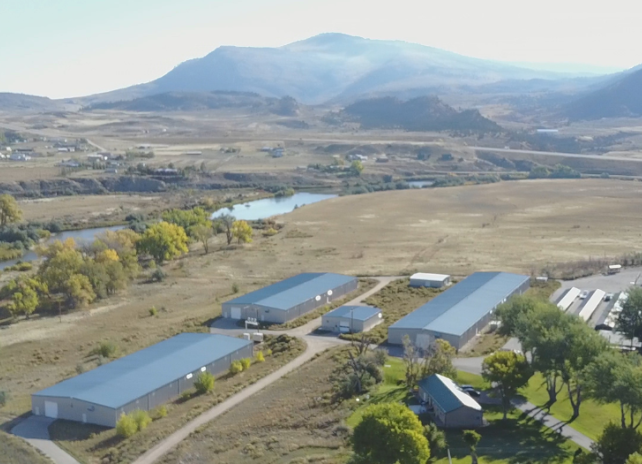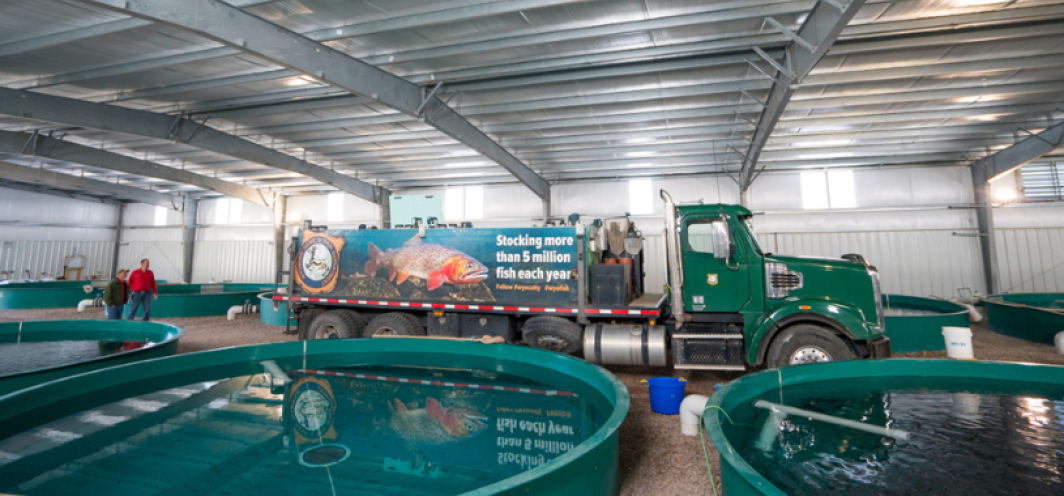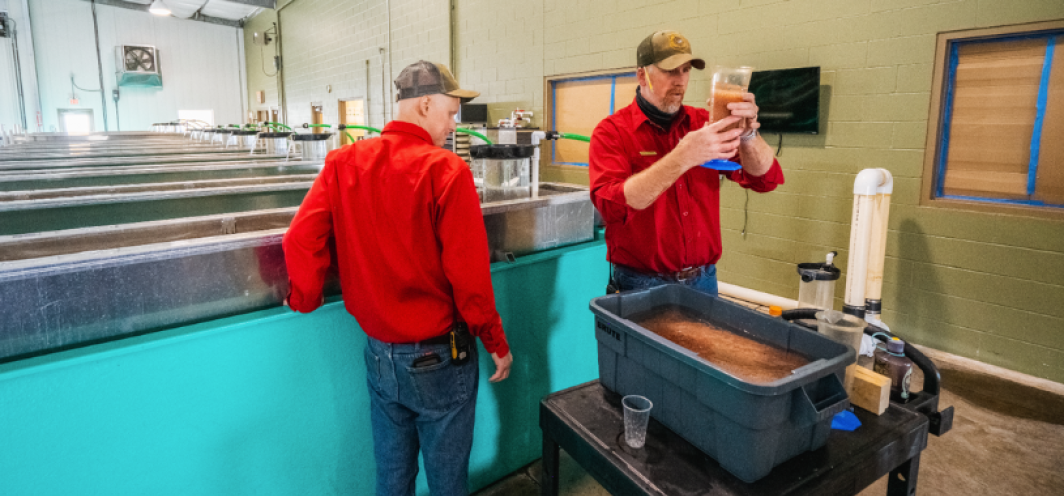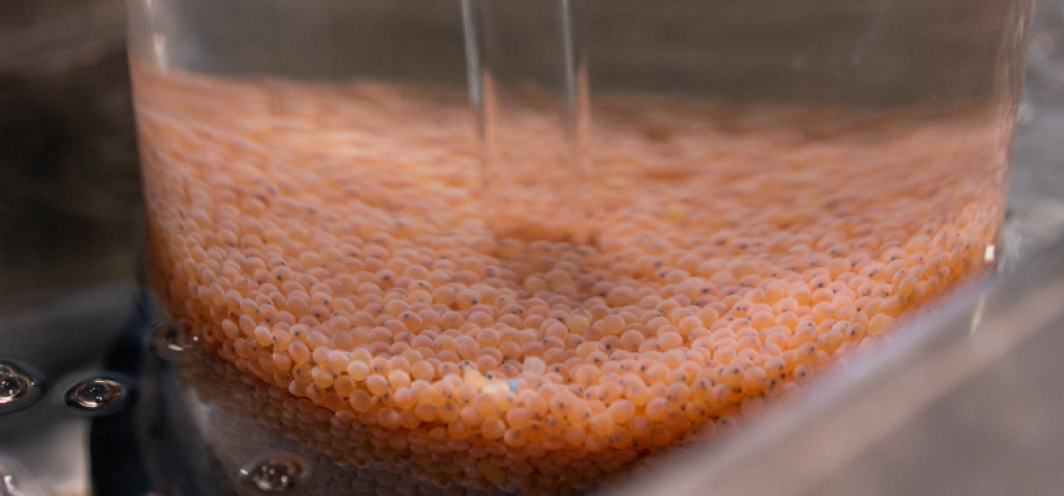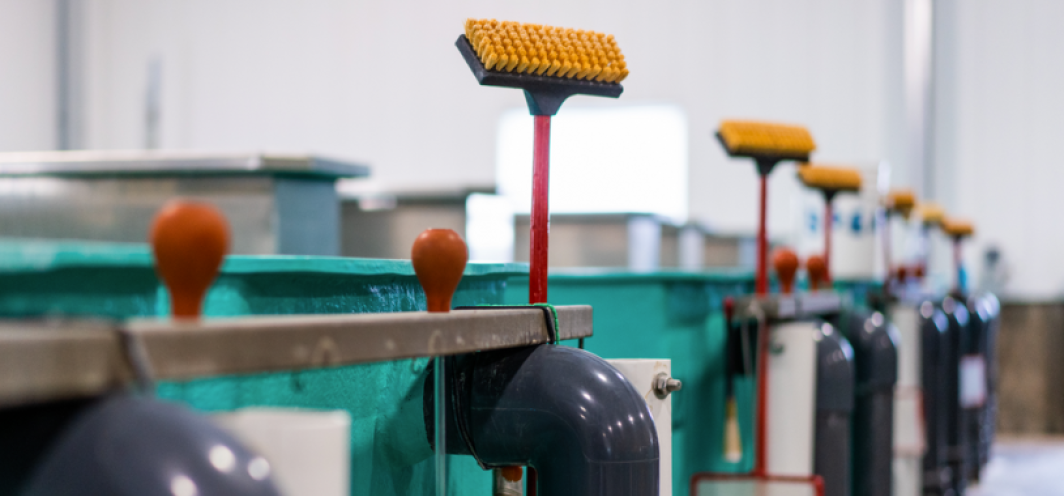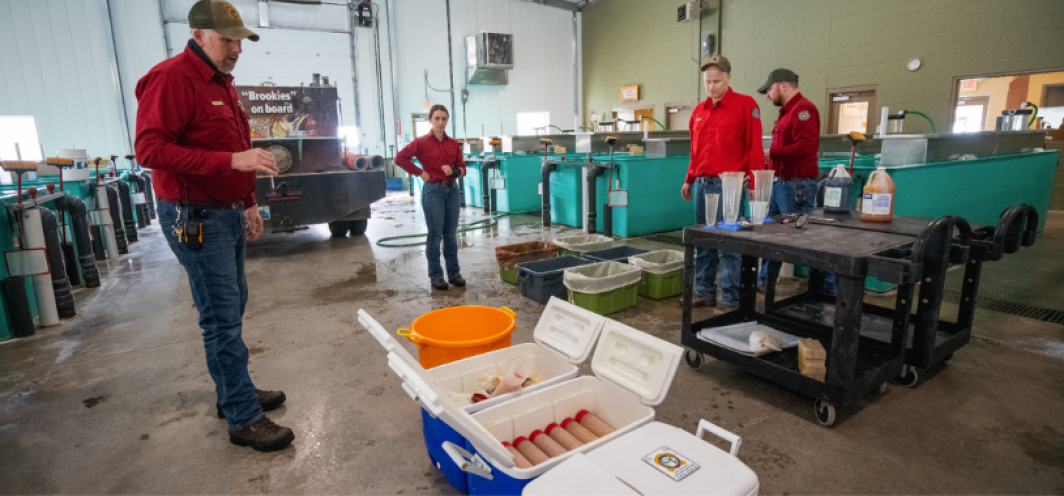Hatchery information
Located along the west bank of the North Platte River in an area called Bessemer Bend, the Dan Speas Fish Hatchery was constructed in 1957 and began full production by 1959. In 2005, an expansion and renovation project began, which was completed in 2012. This renovation allows visitors to see a state-of-the-art facility that raises fish on a large scale -- from eggs to a catchable size. Near the facility is the North Platte River Wyoming Flycasters Memorial Access Area and Jessica's Pond, with a one-acre pond and over a half mile of the North Platte River open to fishing. If you have questions during your time at Speas or the access area, seven full-time personnel are available to answer questions during your visit.
Dan Speas Fish Hatchery Address
Box 8200, Speas Road
Casper, Wyoming 82604
Hours
Open to the public 8 a.m.-5 p.m. daily.
Video tour
Fish Species Raised at Dan Speas Fish Hatchery
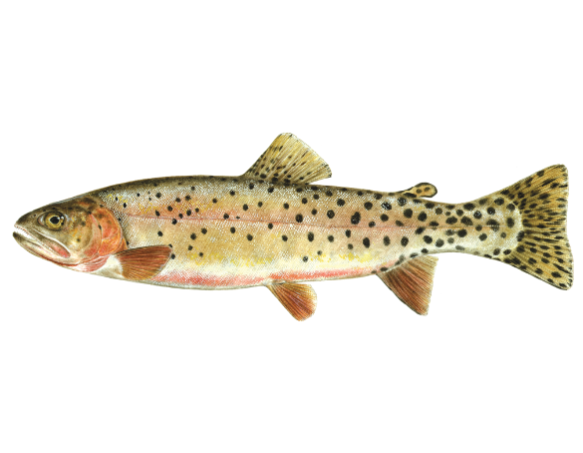
The Dan Speas Fish Hatchery raises a variety of fish species from eggs to a catchable size on a large scale.
The fish species raised include fall rainbow, Eagle Lake rainbow, brook, brown and Bear River cutthroat trout. Dan Speas Fish Hatchery also raises kokanee salmon, tiger muskie and walleye.
What about the water?
Speas' water supply comes from the Goose Egg Spring, the largest freshwater spring in Wyoming. In 2007 the spring was covered to prevent the introduction of disease from wildlife and human interaction. The cover also serves as a shade to prevent the growth of algae. The spring supplies Speas with 6,000 gallons of water per minute at a constant temperature of 60 degrees Fahrenheit. In 2005 a new artesian well was drilled to supply the hatchery with 54-degree water. Both the water from the Goose Egg Spring and the well is supersaturated with nitrogen gas that causes gas bubble disease in trout. To reduce the high nitrogen gas, all the water that flows through the facility is pumped through vacuum-degassing towers. These towers strip excess gasses from the water. After flowing through the degassing towers, nitrogen levels are reduced from 124 percent to less than 100 percent saturation. The water is re-oxygenated before being supplied to the eggs and fish.

